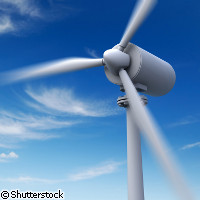Europeans tackle wind turbine development
Researchers at Risø DTU (the National Laboratory for Sustainable Energy at the Technical University of Denmark) and their European colleagues have discovered a way to develop a more reliable wind turbine design. By taking detailed measurements of the load distribution on a 10-metre-long wind turbine blade under natural wind conditions, the team can offer precise information concerning the wind flow over the wind turbine blade surface. The research is part of two EU-funded projects: UPWIND and TOPFARM, with support totalling EUR 14.6 million and EUR 1.7 million, respectively. Led by Risø DTU's Wind Energy Division's Helge Aagaard Madsen and Christian Bak, the team included researchers from the Danish groups Vestas, LM Glasfiber and DONG Energy, and Germany's Siemens. LM Glasfiber developed the wind turbine blade, which has 350 measuring points in the form of pressure sensors and microphones, among others. These features are linked to a measuring laboratory at the root of the wind turbine blade. The Norwegian group Det Norske Veritas (DNV) checked the safety calculations for the wind turbine. According to DNV, the maximum wind speed at which the turbine should run is 15 metres per second (m/sec). It should be noted that the experiment could only be conducted under perfectly dry weather conditions. The team effectively fitted in 12 measuring periods, from late spring to late summer, and obtained extensive data. 'Our measurements are by far the most comprehensive to date, and because they were conducted out in the open and on an industrial full-scale wind turbine, they take account of the impact of turbulence and blade rotation as well as elasticity,' explained Dr Helge Aagaard Madsen. 'There is no doubt that they will be valuable for international wind energy research as a whole. Moreover, we have - so to speak - been listening to the air flow across the blade using 60 microphones and recording 50,000 measurements a second, thereby obtaining an extremely detailed picture of how the wind is translated into load on the blades, i.e. looking at what lies at the very heart of utilising wind power.' According to the researchers, one of the objectives of the experiment is to provide a basis for designing the optimum wind turbine blade profile. The goals are to find a balance between design strength and sensitivity, as well as to guarantee that the maximum amount of energy is produced in a consistent manner. The team are continuing with their measurements this month. They hope to establish the difference between the properties of a blade profile on a full-scale wind turbine in the open air, and the properties of a similar profile under controlled wind conditions in a wind tunnel, they said. Risø DTU also tested a laser-based wind scanner, which was part of the UPWIND ('Integrated Wind Turbine Design') project, funded under the 'Sustainable development, global change and ecosystems' Thematic area of the EU's Sixth Framework Programme (FP6) to the tune of EUR 14.6 million. The researchers said the scanner allowed them to conduct three-dimensional measurements of wind speeds, wind direction and turbulence around a wind turbine. UPWIND targets the development of large wind turbines, both onshore and offshore. The team also used another laser to measure the velocity distribution in the wake of the rotor. The results obtained were part of the TOPFARM ('Next generation design tool for optimisation of wind farm topology and operation') project, which received EUR 1.7 million under the same thematic area.



